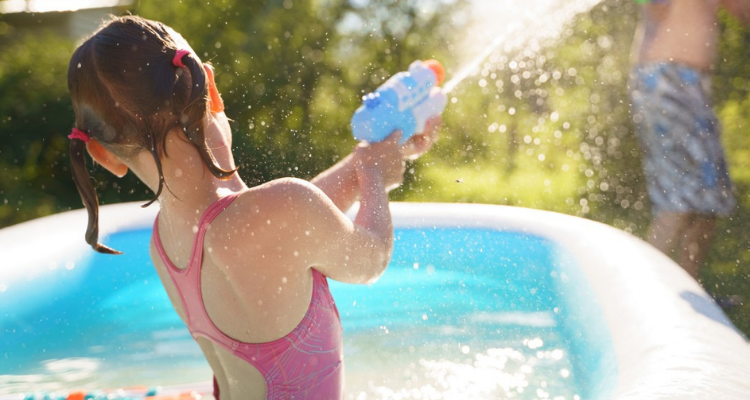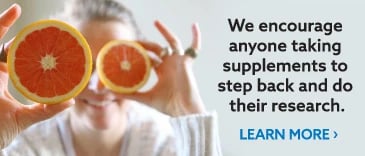
Summer is finally upon us. With warmth and sunshine in abundance, you might be feeling the pull of several exciting opportunities to be out and about with your kids.
In many ways, summer is the healthiest season. You spend more time outdoors, are more active, and tend to eat more fresh foods. Cold season has passed, and there is usually a dramatic drop-off in illnesses. However, certain lesser-known ailments tend to increase over the summer months, and it's crucial to know what they are and how to avoid them to keep your children—and the entire family—safe and healthy.
For kids, summer often brings a higher likelihood of GI bugs from contaminated or uncooked foods, along with sunburns, kidney stones from dehydration, and increased sugar consumption. The good news is that all of these increased summer risks can be easily avoided with some basic summer safety knowledge and strategies.

eight health tips for kid's summer safety
The following six tips encompass sun safety, food safety, and other common risks to children's health over the summer months.
prepare for hotter temperatures
It's great to get out and enjoy the sunshine. Still, children can become dehydrated quickly and usually need adults to enforce proper hydration. Most people—kids and adults alike—don't drink enough water in the summer, and the consequences of inadequate intake can be detrimental to our little ones.
Watch out for common signs like darker urine, nausea, dry mouth, dizziness, headaches, and fatigue. In small children, fewer wet diapers are a sign of dehydration. More severe warning signs include extreme thirst, lethargy, absence of tears when crying, feeling cold, faster heart rate, or confusion. These signs should be taken seriously, so call your doctor immediately if any worrying symptoms occur.
Kidney stones in children are quite common during the summer due to dehydration—pediatricians even refer to summer as "stone season." Never ignore complaints of sharp pains in the back, sides, or lower abdomen, cloudy or foul-smelling urine, pink, red, or brown blood in the urine, pain while urinating, or a constant need to urinate.
To prevent dehydration in kids, offer water consistently throughout the day. It's OK to mix in a splash of juice if they don't like the taste of water, or make an infused water recipe by leaving fresh fruit in water overnight in the refrigerator. Beverages like unsweetened coconut water are OK, but nothing should replace pure water.
Also, keep in mind that just because you might be spending time in water (pools, lakes, rivers, or the ocean), this doesn't mean you won't become dehydrated. Your children can dehydrate just as fast, if not faster when spending the day swimming.
ensure adequate sleep
Children can struggle to get enough sleep in the summer, especially if they live somewhere where the sun sets late and rises early. Investing in blackout curtains can be a great option, along with maintaining consistent sleep schedules, keeping bedrooms cool, and staying active during the day. Inadequate sleep can impact kid's immune function, along with high stress.
keep summer sweets in check
Allowing summer treats once in a while is expected and acceptable—there’s nothing like enjoying ice cream as a family. However, be sure not to go overboard with sugar consumption, and balance it with a healthy and balanced diet.
Studies suggest a connection between poor memory later in life in children with higher sugar consumption during their early years, due to its impact on the gut microbiome.* High fructose consumption can damage synaptic activity in the brain, impairing communication between brain cells. On the flip side, balanced nutrition for kids is essential for focus, concentration, and overall health.
Consider making your own sweets at home, like this one-ingredient banana ice cream. Add a spoonful of nut butter for healthy fats and cinnamon for more flavor and sweetness.
cook and wash foods thoroughly
GI bugs become increasingly common in the summer due to the foods we eat. While it's wonderful to eat more fresh produce, be sure to wash it well (even when it's organic) and cook meat thoroughly.
Cook foods to 75 degrees C or 167 degrees F to ensure you kill all food-poisoning bacteria. Sausages and chicken should be cooked all the way through (no pink meat visible and juices should be clear). Steaks, whole cuts of red meat, and chops can be cooked to your preference, as dangerous bacteria exist primarily on the surface.
Check out the CDC's food safety tips for a more thorough description of how to avoid GI bugs over the summer.
be aware of ticks and other bug bites
Depending on where you live, ticks and other bugs can be problematic during the summer. If you live in a tick zone, it's vital to constantly check yourself, your kids, and pets for ticks every day. The ideal solution is to wear long pants and socks, although this isn't always practical for children in hot weather.
If you're concerned about toxins like DEET and permethrin in tick and bug repellents, choose a few outdoor outfits to spray and let dry. Once the clothing is dried, the chemicals in the repellent won't be absorbed by the skin but will deter potentially dangerous insects.
While there isn't much scientific data to support this, some people believe that planting rosemary and lavender around their homes naturally repels bugs and use natural repellents containing these ingredients.
learn proper sun safety
Sun safety and exposure are all about balance. The key is to avoid burning while still allowing yourself enough exposure to soak in some vitamin D. If you live in a northern region (like most people living in the US), it's difficult to obtain enough vitamin D from sunshine alone. Most doctors and pediatricians in these areas recommend vitamin D supplementation all year round, including during the summer months.
Choose a sunscreen with at least SPF 15, and opt for products that use zinc oxide or titanium dioxide. While the research is still out on the potentially harmful effects of toxins in sunscreen, certain ingredients like oxybenzone have been associated with inflammatory reactions and other worrying side effects in children.
Vitamin D is best metabolized during certain hours, usually between 10 am and 2 pm. Try to expose yourself and your children to some sun during these hours with sunscreen.
learn to swim
According to Stanford Children's Health, around 830 children under the age of 14 drown each year. Drowning is the second leading cause of unintentional death in children ages one to four and ten to fourteen. It is the third leading cause of death in children under the age of one.
The best way to teach water safety is by enrolling your kids in swim lessons. Also, be sure to always supervise your children in the water, and don't play breath-holding games. Use life vests or floatation devices with young kids, and be sure to stay away from pool drains and within designated swim areas. As an adult, be wary of drinking alcohol when you are supervising children around water.
take steps to promote safety in case of an accident
With more activities presenting physical risks, your children must wear helmets or other protective gear when necessary. Bike and car accidents rise significantly in the summer, so be diligent about seat belt and car seat use, as well.
conclusion
You don't need to get so caught up in worrying about risks that you don't enjoy the summer. Still, it's essential to be aware and take appropriate precautions. Always speak with your child's doctor about any worrying behaviors or signs of discomfort that seem out of the ordinary.














.png)




